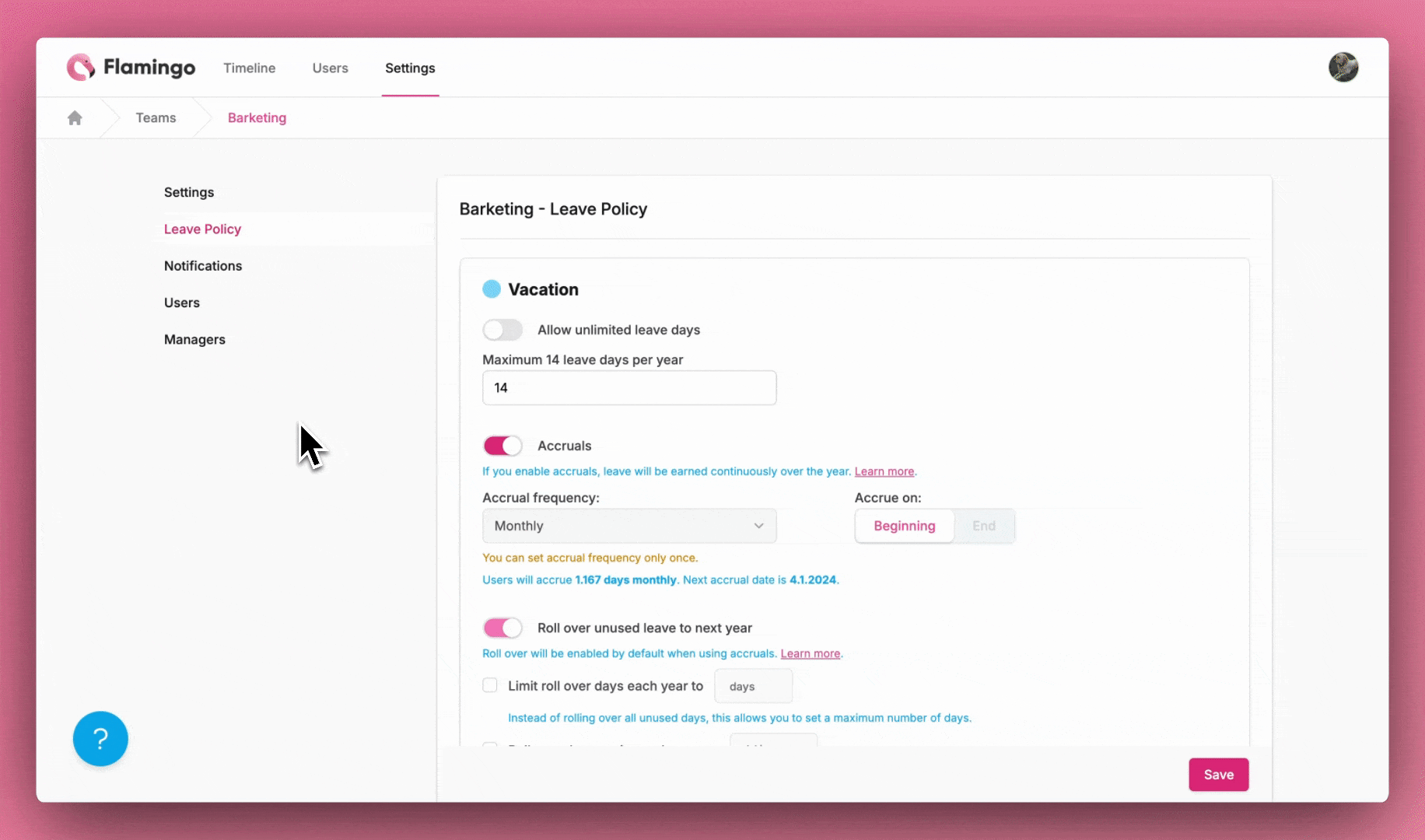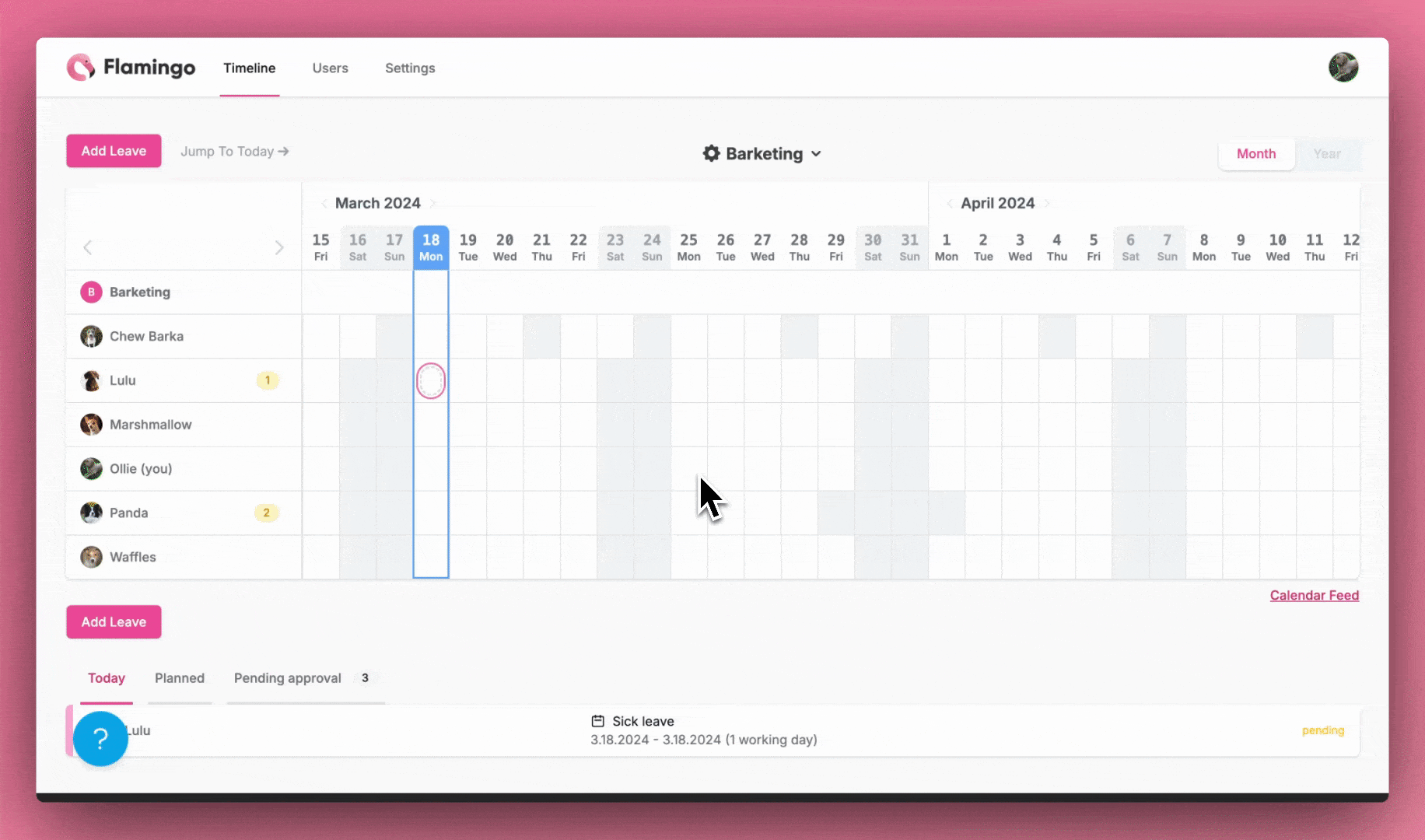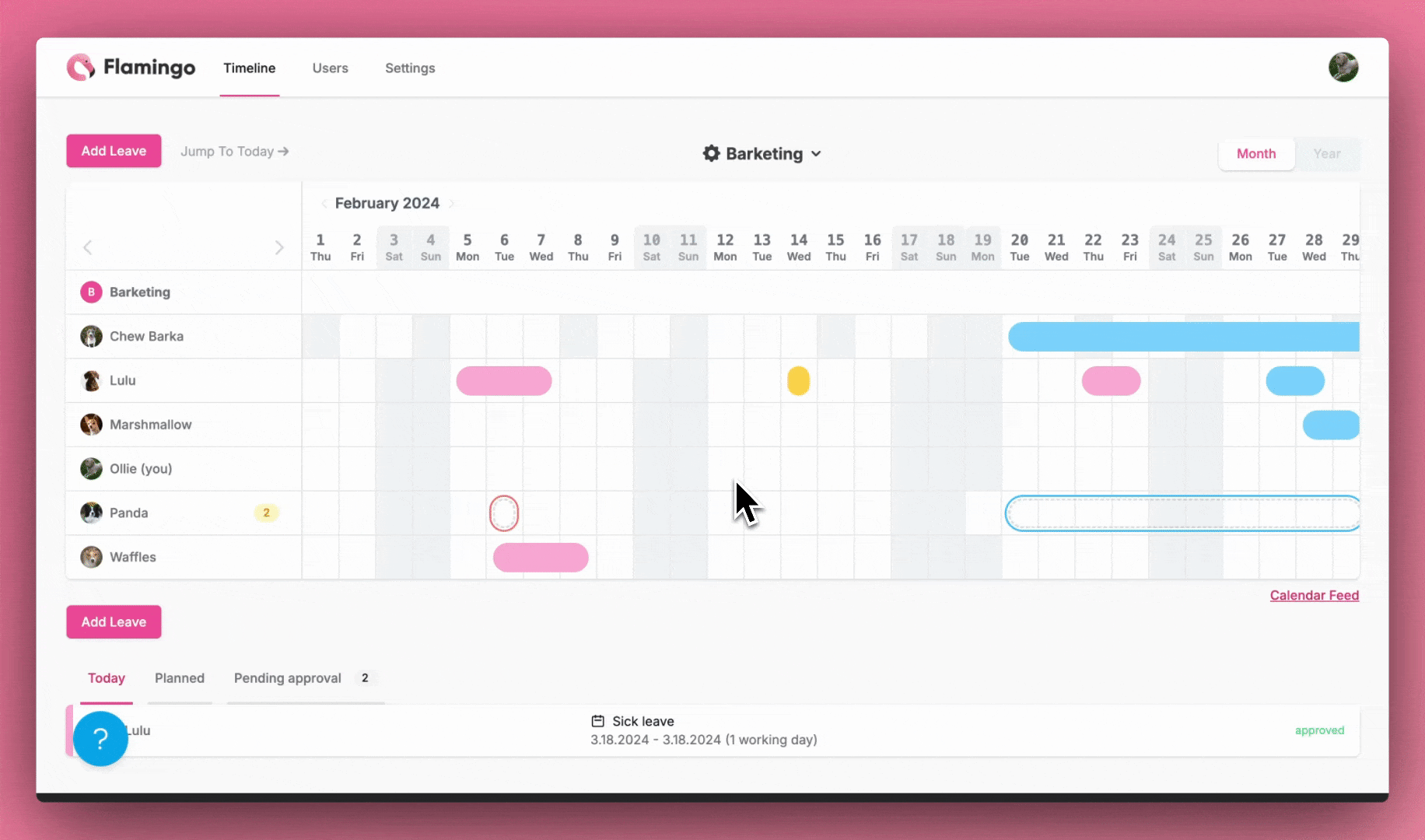November 18, 2024
Presenteeism: The $150 Billion Problem for Modern Businesses
What if your organization is losing more productive hours from employees showing up than from those staying h...
An absence policy is just one of many policies that most businesses should have in place. This policy is a key part of a high-performing absence management system. It’s a key part of setting clear expectations for employees and minimizing the cost of absenteeism to the business.
If you’re wondering where to start with an absence policy (or whether you really need one at all), this article is for you. We’ll run through why this policy exists, whether it’s necessary, and walk you through creating an absence policy for your team.
An absence policy is a document that sets out expectations and responsibilities for employees in regards to being absent from work.
You might also refer to this as an absence management policy, sickness policy, sickness absence policy, or it may be folded into your employee leave policy or attendance policy.
It should explain details such as when an employee is allowed to be absent from work, how long for, and what they must do if they aren’t able to attend their regular scheduled shift.
HR is usually responsible for creating and managing this policy. In some cases, this responsibility will instead fall on department managers or team leaders.
You might think this is overkill. For small businesses, this is understandable.
Let’s say you’re running a small, close-knit team with a strong company culture. It’s possible that an absence management policy never comes into play, because everyone is aligned on the same goals, and no one presents any problems.
You might end up creating a policy which no one ever looks at, and is never referred to again.
However, just because you don’t need an absence policy now, doesn’t mean you won’t need it in the future.
Your team may grow to where you have too many employees for each one to be self-driven and aligned mentally.
You’ll likely never realize that an absence problem will happen until it does. Not having a policy in place could then make it quite difficult to solve this problem and prevent significant losses.
The goal of an absence management policy is not to eliminate all absences completely.
This is unrealistic – it’s a fact of life that people from your team will, at some point, get sick or injured and be unable to work, or have personal circumstances outside of work that require attention.
Worse, trying to eliminate all absences can actually cause significant harm to your team.
It would result in a culture where employees are afraid to ask for a day off, increasing the risk of burnout and leading to many instances of presenteeism.
The goal, instead, should be to limit absences to a reasonable amount, minimize the long-term cost of absences, and prevent abuse from team members.
Trending Article: What is Discretionary Time Off (DTO)?
Let’s dive into what kind of details should be included in your company’s absence policy.
Set out what are acceptable grounds for an employee to be absent from work.
Reasons could include ill health, physical injuries that prevent the employee from performing their regular duties, personal or family obligations, and the illness of one’s child – just to name a few examples.
Anything outside of the list of permitted reasons may be treated as unexcused absences, and thus initiating actions that will be laid out later in the policy.
There may be some clarification to make as to what is and isn’t an absence.
Some are obvious – such as if an employee misses the whole day.
However there may also be cases where lateness or disappearances are treated as absences.
For example, you might state that if an employee is more than 30 minutes late, they will be regarded as absent.
Similarly, early departure (leaving prior to their scheduled finish time) may be treated the same.
An absence policy will generally give a limit on the number of absences that will be permitted for each type.
For example:
You may choose not to place a limit on some or all absence types, though this does increase the potential for abuse.
An absence policy should explain what a team member needs to do if they’re unable to make it to work.
Examples may include:
This ensures clear lines of communication, helps minimize disruption and confusion to the team when an employee is absent, and also minimizes the likelihood of abuse.
The policy might state that failing to follow these procedures will result in it being treated as an unexcused absence, and the initiation of disciplinary action.
The policy may differentiate between paid and unpaid absences, and lay out what the employee needs to do in order to be compensated for their lost pay.
For example:
Possibly the most important part of an absence policy is to make it clear what may happen if a person breaches the policy.
This could include:
You should state how many consecutive absences are required for it to be treated as job abandonment (the assumption that the employee is not coming back to work), and thus the employment contract is automatically terminated.
Clearly outlining the disciplinary process protects the business against wrongful termination suits should an employee be fired or demoted due to absenteeism.
It’s essential that your absence policy follows any relevant labor laws and regulations in your area.
Examples may include:
The law may also govern what kind of followup actions are allowed.
You may need to follow certain steps in order to discipline or terminate an employee for absenteeism. Some laws forbid you from demoting an employee for frequent absences, or automatically taking from their PTO balance.
You may not be allowed to terminate employees for sickness absences at all (or, if you’re in an at-will state, termination may be allowed without reason).
Make sure you know which laws apply to your business, and that your absence policy follows all of these laws.
Check out our leave laws hub for information on local labor laws in the US and around the world, but for complete guidance, be sure to get advice from a legal professional.
Here’s an example of what an absence policy could look like for your business.
Absence Policy – ABC LLC
This policy guides how unexpected, unforeseen and unscheduled absences are treated for the employees of ABC LLC.
Sickness Absence Policy
Employees are entitled to be absent from work if they are unwell or injured, and as a result are unable to perform their regular duties to their regular standard.
A sickness absence as per this policy includes when an employee’s child or dependent is sick or injured and the employee must take time off work to care for the child or dependent.
Absence for Mental Health Reasons
For the purposes of this policy, a sickness absence includes both physical and mental health. Employees are entitled to the same sick leave and compensation for mental health reasons as for physical injuries and illnesses.
Absence for Personal Reasons
Employees are entitled to up to ten days off per year for personal reasons, including family commitments, personal obligations and unforeseen circumstances.
Notification Procedures
Employees must notify their department manager as soon as possible if they are unable to attend their regular scheduled shift.
The absence must be entered into the Flamingo App in ABC’s Slack workspace and approved by the employee’s department manager.
Unexcused Absences
If the employee is absent without making a reasonable effort to notify their department manager, their absence will be considered a no-show and subject to disciplinary action.
It will also be considered an unexcused absence if the employee is not present for more than 50% of their scheduled hours on a single day (including lateness and early departure, combined), without approval from their department manager.
Compensation for Sick Leave and Mental Health Leave
Employees can be paid for a maximum of 28 days per year of sick leave and mental health leave (combined).
Compensation will be paid automatically in the pay period, together with the employee’s regular pay.
Compensation for Personal Leave
Employees can be paid for a maximum of five personal days per year.
Compensation will be paid automatically in the pay period, together with the employee’s regular pay.
Long-Term Sickness and Personal Leave
If an employee’s health or personal commitments will result in an absence of longer than 20 consecutive working days, they are required to notify their department manager and apply to the human resources department for a long-term leave of absence.
If approved, a long-term leave of absence is unpaid, but the employee may return to their original position upon return to work.
Procedures for Breaching This Policy
Breach of this policy will result in the employee’s leave not being compensated, or their leave being treated as an unexcused absence.
Unexcused absences will be subject to disciplinary action. More than three consecutive unexcused absences, without the employee making a reasonable attempt to contact their department manager, will be considered as job abandonment and may result in termination of the employee’s contract.
Questions and Clarification
For any questions or clarifications on this policy, please contact human resources at hr@abc.llc, or contact your department manager.
Get this absence policy template as a Google Doc
An absence management software like Flamingo is the perfect way to manage sick leave and other absences, and enforce your absence policy.
Here’s how it works and how to get set up.
First, set up your absence types for your team, along with an optional limit for each:

Once this is set up, communicate to your team to apply through Flamingo’s web app, Slack app or Microsoft Teams app for any qualifying absences.

Now their team’s manager will just need to review and approve the leave (you can also set this to auto-approve for specific leave types).

The absence will show up on your team’s timeline, and you can pull up a history of each employee’s absences at any time.

This is an automated solution to make your department managers’ or HR team’s job much easier, and communicate to all necessary parties whenever a team member will be away from work.If you want to learn more about how Flamingo makes your absence management system more efficient, check out a demo here or start a free trial and try it out yourself.
Flamingo® makes managing your team’s paid time off a breeze.